If Corte*Clean® has not been used before, it will clean composites of the tannin, from the dead organic material, such as wood fiber, from which most composites are partially made. Unlike sodium hypochlorite and/or oxalic acid based products, which only bleach then brighten the wood fiber, Corte*Clean® will stop what is commonly referred to as “tannin bleeding.” Failure to thoroughly remove the food source that fungi feed on generally exacerbates fungus growth.
BEFORE Corte Clean® working
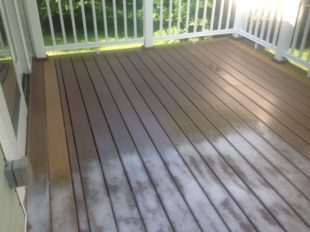
AFTER Corte Cleaned
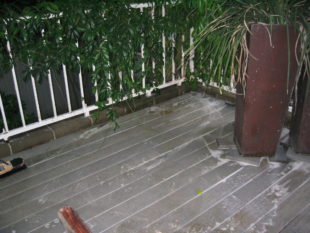
BEFORE – Mold Stained Home Depot® Veranda®
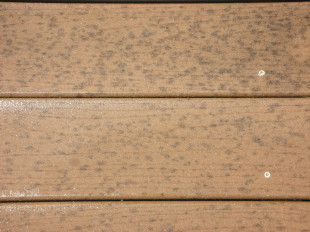
AFTER – Corte Cleaned Home Depot® Veranda®
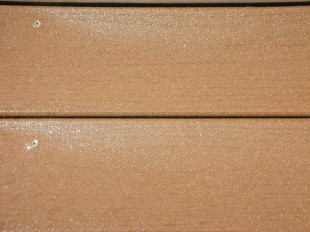
BEFORE – Mold Stained ChoiceDek®
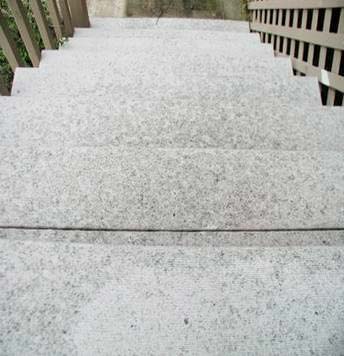
AFTER – Corte*Cleaned® ChoiceDek®
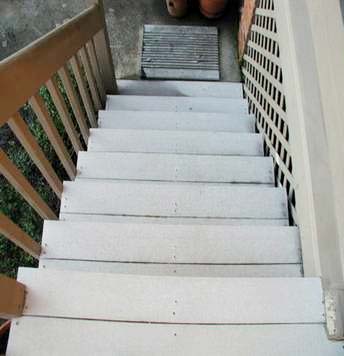
It generally takes two (2) “repeat” applications of Corte*Clean® at “maximum strength” to clean new composites of tannins and stains when first noticed. A bag of Corte*Clean® is designed to clean approximately “300” square feet of composite at “maximum strength” with two (2) “repeat” applications. If the composite intended to be cleaned has excessive tannin bleeding, has been neglected, or previously cleaned with other products, such as those that contain sodium hypochlorite or oxalic acid, additional “repeat” Corte*Clean® applications may be necessary to thoroughly Corte*Clean®, requiring the purchase and use of additional Corte*Clean® to initially clean the composites.
Before - Mold Stained ChoiceDek®
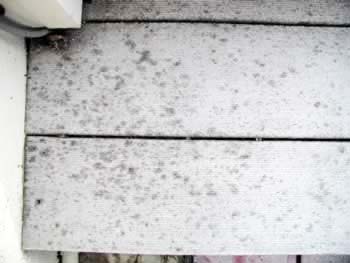
After one Corte*Clean® application. Needs another!
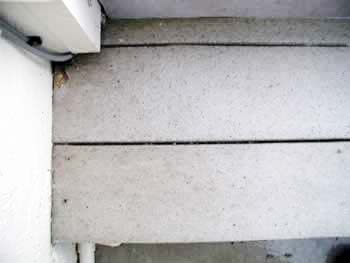
When Corte*Clean® is proactively used, as it is designed and intended, prior to stains occurring, one (1) bag of is designed to maintain the clean appearance of approximately 500 square feet of composites, with one (1) application, twice (2x) per year, Spring & Fall, or before stains appear. It is always best to proactively Corte*Clean® composites before it rains or the composite receives moisture. Proactively Corte*Cleaning® prevents the build-up of mold spores, pollen and other debris that cause fungus stains, while naturally rinsing any remaining Corte*Clean®, saving time and water.
Before Corte*Clean® - Neglected Mold Stained ChoiceDek®
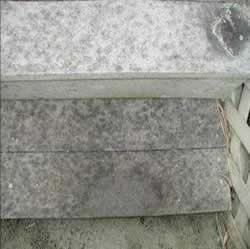
Corte*Cleaned® ChoiceDek® that needs to be exposed to sunlight to even out the color.
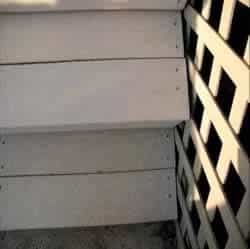
Half Corte*Cleaned® Mold Stained Fiberon® Deck wet w/ water
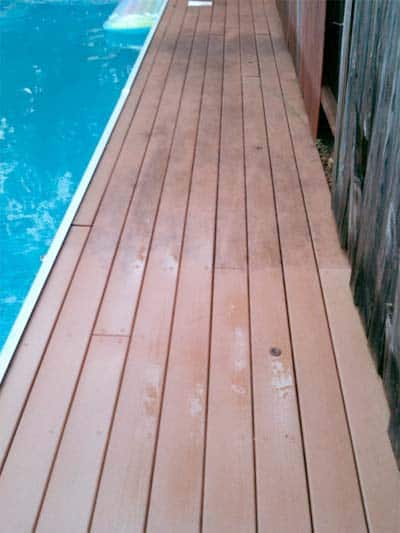
Corte*Clean® cleaning a Trex® deck
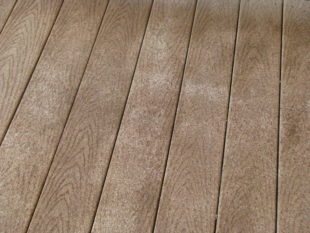
After - Trex®deck Corte*Cleaned®
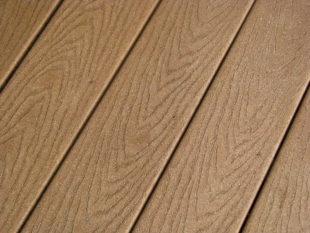
Corte*Clean® Cleans Grease, Oil, Rust & other stains commonly under the BBQ.
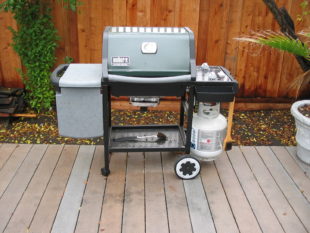
Before - BBQ mess off ChoiceDek Classic.
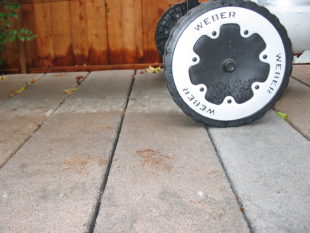
Corte*Cleaned the BBQ mess off ChoiceDek Classic.
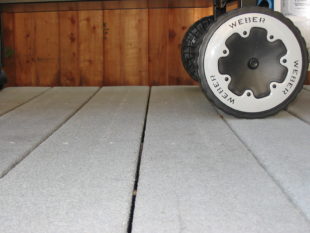
Lowe’s® ChoiceDek® with dried out mold stains.
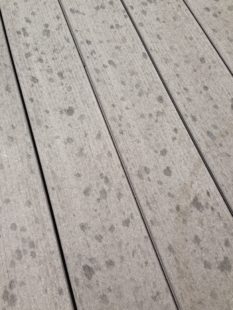
Lowe’s® ChoiceDek® Corte*Cleaned®
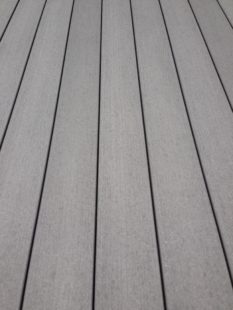
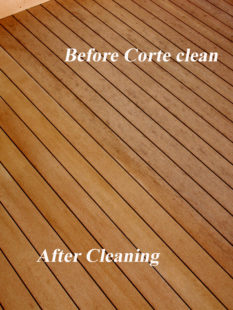
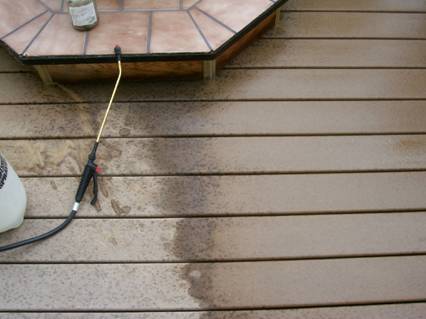
A common issue with NEW composites…
Our sun is very powerful at bleaching/fading/weathering the color of composites.
New composites have not generally naturally weathered or been bleached/faded by exposure to the sun. Weathering of composites can generally take months to years depending the type of plastic they are made from, the environment they are located and how much sun or moisture they receive. Unfortunately, composite owners do not generally know that most composites weather because they did not read the composite literature, provided by most composite manufacturers, resulting in the #2 biggest complaint in the composite decking industry; color fade.
Trex® “Natural Weathering”/bleaching/fading
The above picture is of TREX®.
The piece on top of the installed deck is a left over scrap from the below decking. They are from the same unit of TREX®. The scrap on top of the deck has never been exposed to direct sunlight and allowed to go through the inevitable “Natural Weathering” process as disclosed by the Trex® Company. Corte*Clean® will generally speed up the inevitable process, but will not generally bleach/fading/weather composites beyond what occurs naturally like sodium hypochlorite based products.

The above picture was a brown colored Trex® deck that has been routinely chlorine bleached, for years, with sodium hypochlorite, in an attempt to remove mold stains, until the sodium hypochlorite based product had little to no effect, in bleaching out the mold. Unfortunately, the sodium hypochlorite bleached the color of this brown deck gray.
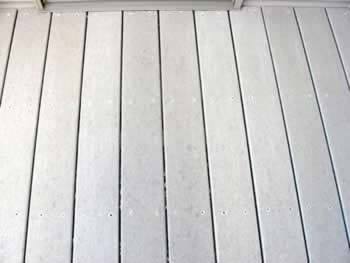
Corte*Cleaned® Trex® with weathering issue.
The above Trex® deck has been Corte*Cleaned®.
Notice how a little of the original brown color is again slightly noticeable. Notice how the black color from the mold stains has been removed. Where the mold stains were, is now a weathering issue. Weathering issues or color variations caused by stains, door mats, flower pots, BBQ’s, etc. or other common items blocking the sun will eventually naturally weather away once thoroughly Corte*Cleaned®. It generally takes up to 20 weeks of direct sunlight for the composite to naturally weather to one uniform color. Mold weathering issues will be covered on the Mold & Mildew Stains next page.
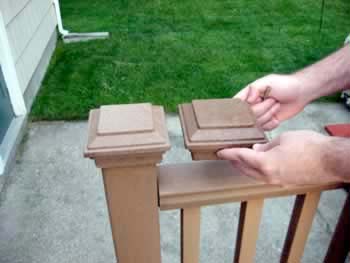
A Corte*Cleaned® Trex® railing system and a un-cleaned, new rail cap. This is similar to the “Natural Weathering” Trex® shows on their website.
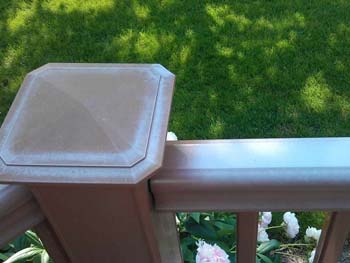
Trex® chlorine bleached cap and rail.
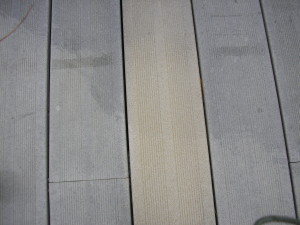
Photo of weathered composite deck where composite has been Corte*Cleaned® on the center board. Notice how the composites original color was brown or beige of this ChoiceDek® Plus. The composite will stay this color until it weathers back to gray by exposure to the sun.

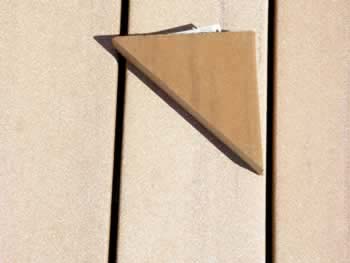

I have some left over Corte Clean from 2014. Does it have an expiration time?
Yes, Corte Clean DOES have a “Best If Used BY:” date on every 2000A bag. It is one year from the manufacturer date (other date on Corte Clean bag). Corte LLC does NOT provide a “GUARANTEE & Limited Warranty” for product that goes beyond this date, as stated on the bottom of every bag: “Corte LLC guarantees & warrants your satisfaction with the performance of Corte Clean when applied in accordance with label directions and used by: “Best If Used By” date on package”. The reason for this date is Corte Clean likely won’t get composites clean, especially those that have been neglected or previously cleaned with other products, specifically those where sodium hypochlorite was previously used in an attempt to clean mold, after this date, as it looses cleaning strength over time.